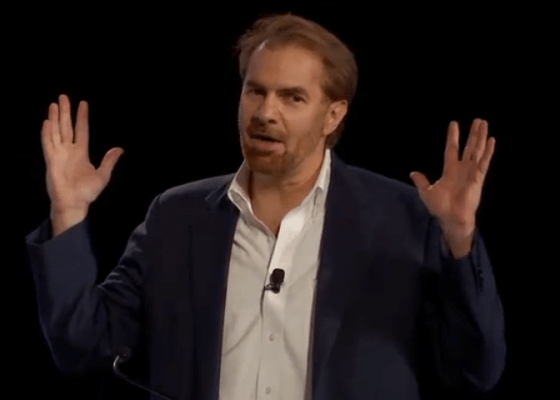For all the benefits of living in a connected world, there is one huge disconnect: the economy seems to be growing, but it is not creating jobs. This disconnect is not a temporary blip that will disappear with a full economic recovery. It is part of a longer-term structural change in the economy.
Yesterday at the Techonomy conference, I moderated a debate (which you can watch above) between two economists, Erik Brynjolfsson of MIT’s Sloan business school and Tyler Cowen of George Mason University, about whether or not technology is the engine of the economy or whether, in fact, it is destroying jobs.
Many of us take for granted that technology is the brightest spot in the economy, where most of the innovation and job creation occurs. But if you look more broadly at the impact of technology across every industry, it doesn’t look so great. Technology makes businesses more efficient, often by eliminating the need for repetitive tasks and the workers who do them. We are not replacing those jobs with enough new, higher-skilled ones to make up for the loss.
So what we are seeing in the U.S. over the past decade is productivity growth without the job growth that usually comes with it. Traditionally, productivity growth and job growth went hand in hand, but that is no longer the case. Annual productivity growth in the U.S. between 2000 and 2009 was 2.5%, a faster rate than at any time since the 1960s. Yet the last decade saw the total number of jobs decline by 1.1 percent.
The official unemployment rate in the U.S. is 9.1 percent, with 13.9 million million out of work. Median wages in the U.S. have gone almost nowhere since the 1970s, which was the impetus for Cowen’s book, The Great Stagnation. Meanwhile, income disparity between the richest 1 percent and everyone else keeps growing. The other 99 percent is not too happy about that, as the #OccupyWallStreet movement illustrates.
Is the U.S. worker in the same position today as the workhorse was 100 years ago when it was replaced by another technology: the engine (first steam, and then internal combustion). Peak employment for horses was in 1901, there were 3.25 million working horses in the England. Those jobs went away with the introduction of machinery, tractors, cars, and trucks.
Today, workers in factories are being replaced by robots and software, more broadly, is automating many jobs that people used to do. Companies benefit because they can operate leaner and make more profits, but what about the people? For the first time ever, the Luddite fear that machines will replace people seems to be coming true.
But wait a second, says Brynjollffson. His central argument, which he puts forth in Race Against the Machine, a book he co-authored with Andrew McAfee, is that it is not people versus machines. It is people with machines. Technology is just a tool that lets us be even more productive.
The problem is that not enough people know how to use the new tools of the Internet, mobile, and cloud computing. The workforce as a whole does not have the right mix of skills. Hence tech companies can’t hire enough engineers while the rest of the economy suffers from perpetual unemployment.
When you look at the actual economic data, things seem grim. But I am an optimist. I think technology can help lead the way by creating new jobs and redefining employment. The cost to create new companies has never been lower, and new forms of work that use the Internet as its organizing principle (instead of the firm) are beginning to become more commonplace.
But will it all be enough to restart job growth across the economy as a whole? I’m not sure anyone can answer that question just yet.
(For more on this topic, check out Andrew Keen’s interview with Brynjolfsson and his co-author Andrew McAfee, as well as this lively one-on-one with Cowen).
